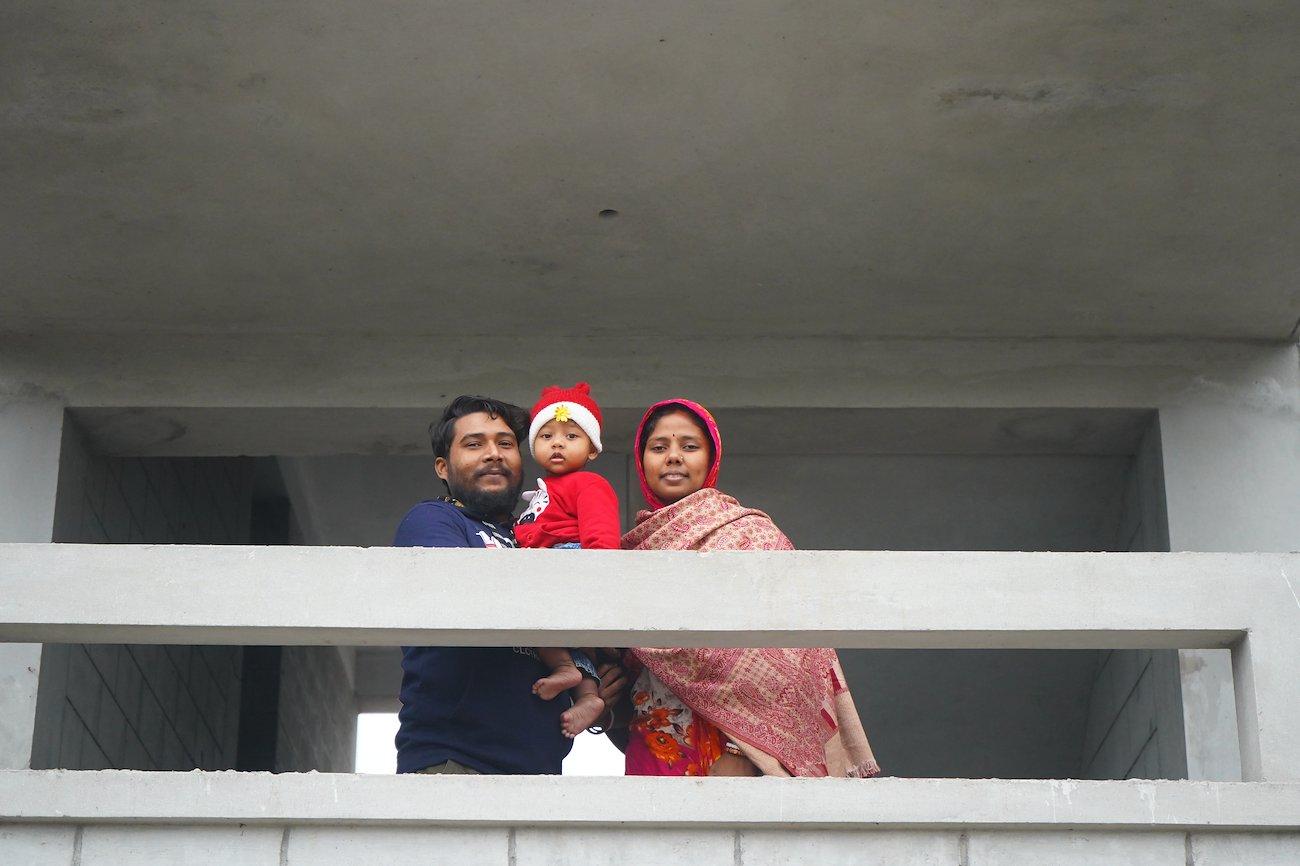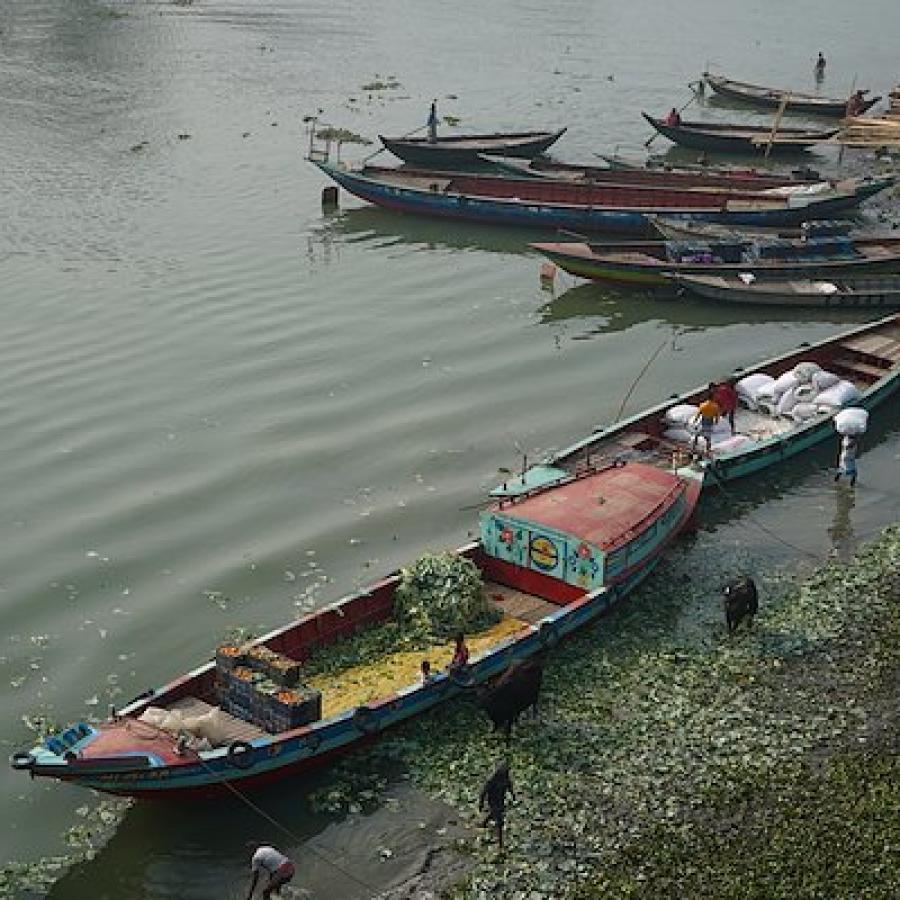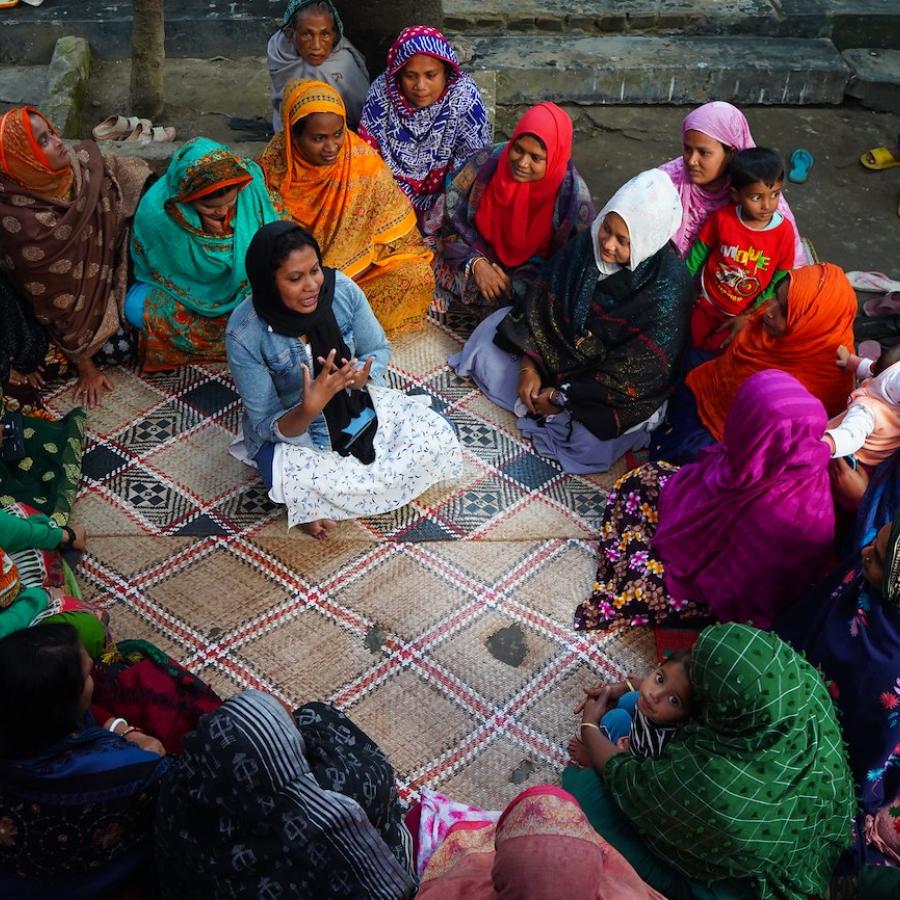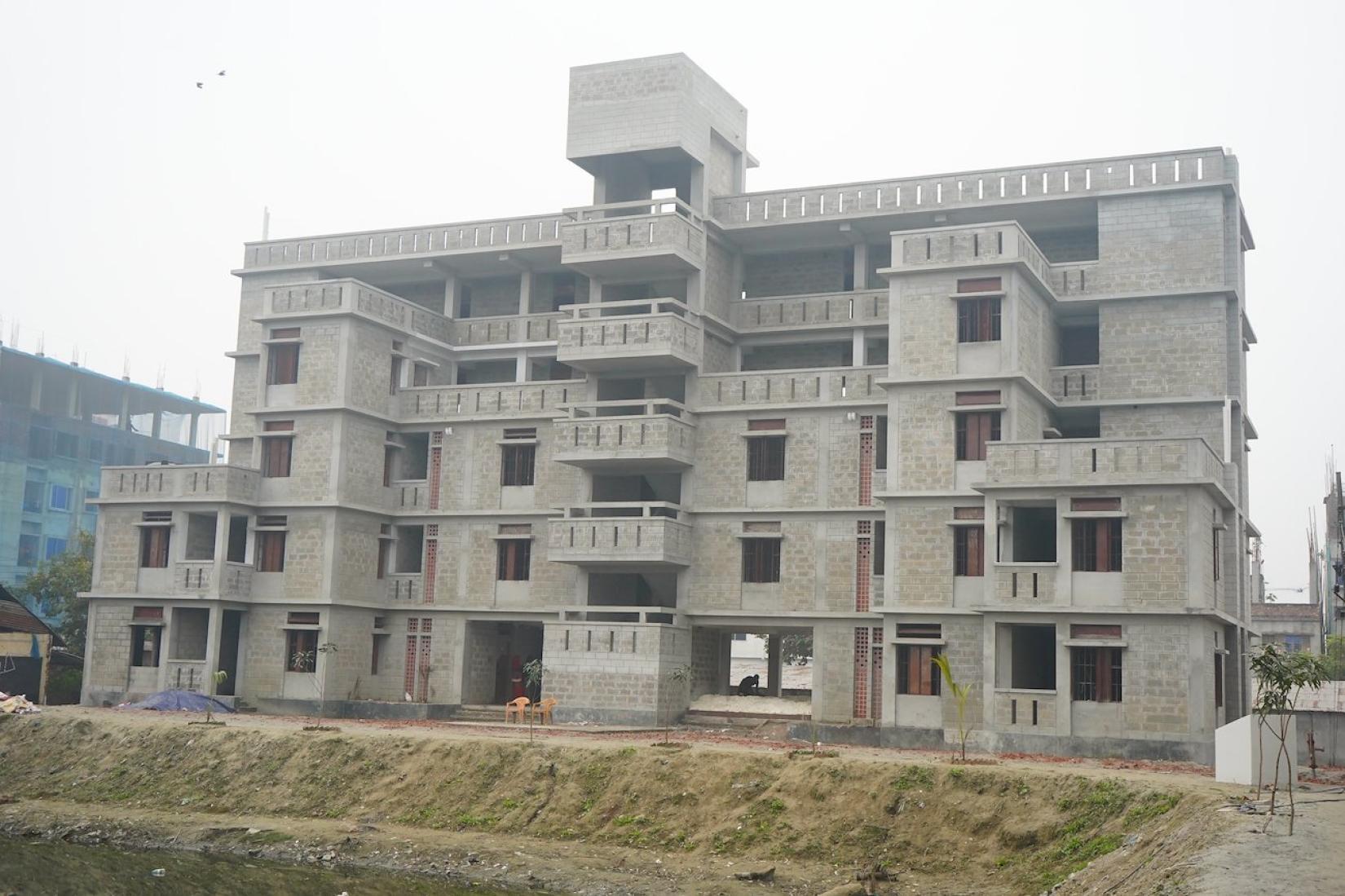SMALLER STRIDES FOR SUSTAINABLE OUTCOMES

Fighting Poverty in Chandpur
Chandpur is a district under Chattogram division located at the conjunction of two mighty rivers, the Padma and the Meghna. Popularly known as the breeding hub of the national fish “Hilsha”, this district has come a long way in terms of development.
In Chandpur Municipality, urbanisation is fuelled by population growth and rural-to-urban migration. This significantly impacts the socio-economic structure of the municipality. While bringing with it potential for driving positive transformations, it also fuels a variety of challenges, particularly regarding the vulnerability and livelihoods of marginalised people.
To help address these challenges, in 2018, the United Nations Development Programme (UNDP) started working with the Government of Bangladesh to reduce poverty among the urban poor in Chandpur. Under the project “Livelihoods Improvement of Urban Poor Communities (LIUPCP)”, UNDP works closely with the Local Government Division (LGD). With funding from the United Kingdom’s Foreign, Commonwealth & Development Office (FCDO), it has introduced certain approaches with the potential to have a sustainable impact.
Here is a reflection on key steps taken towards sustainable outcomes in Chandpur:

WOMEN TURNED INTO DECISION-MAKERS:
The first task was to identify the communities most vulnerable to poverty. Beginning with this task and continuing forward, the project adopted a community-based approach. This means, all the activities are driven and activated by the relevant community. Women have been at the forefront of this approach.
Women from the respective communities were encouraged to take leadership. This way women were the ones who identified the needs and challenges of a community.
The path was not easy as Nazma Alam, a community leader explained. She has been working for the development of her area since 2018. She talked about the multifaceted challenges they faced starting from their own families to raised eyebrows from society. But, in the end, they persisted through all of it and voluntarily worked for their causes.
The experience motivated a lot of girls and women to carry on with their educations, open businesses, join the regular job market, and even take part as candidates in municipality elections.

REMODELLING THE SAVINGS STRUCTURE
In the urban slums, people frequently turn to micro-credit organizations for loans during crucial times. When these loans come with a high-interest rate, this structure can trap them in debt. In the end, they can be left with nothing to save.
The LIUPCP project, however, has introduced a totally different credit scheme, led and owned by the community. The scheme is managed by a Community Development Committee (CDC), which runs a bank account for participants under the same name.
Each month CDC members contribute whatever they can to that savings account. And when there is a need, they take a loan from this very account. A 15% annual service charge is levied upon the loan which gets deposited with the same account. At the end of the year, the service charge is distributed among the participants.
This way, both the ownership and the flow of money remain within the people of the community.

DEVELOPMENT OF ROADS AND INFRASTRUCTURE
There were areas where communities were left behind due to poor roads and infrastructure. The residents said the condition was so dire that relatives often refused to acknowledge any ties with people living in that area. UNDP in collaboration with the municipality involved the community through community contracting to develop the roads and infrastructure and engaged them in activities based on their expertise.
TOWARDS A BETTER ROOF OVER ONE’S HEAD
People often live in inhumane conditions in urban slums with limited or no access to safe drinking water, sanitation, waste management, and overall proper health care. But they also dream of having a house of their own.
The Government of Bangladesh is endeavoring to improve the provision of dignified housing to those who live in such challenging conditions, and in connection with this, the LIUPCP helped identify the needs of low-income communities in Chandpur.
It is noteworthy to mention that the construction site was raised by six feet from the road making it resilient to natural disasters like floods. Environment-friendly concrete hollow blocks were used instead of burnt bricks making it climate-friendly. Upon completion of construction under the project, two five-story buildings will house 88 families.
This is how UNDP is catalysing transformative change for urban poor communities and building resilience in Bangladesh through the Livelihoods Improvement of the Urban Poor Communities (LIUPC) Project. By employing inclusive and climate-smart strategies across 19 cities, UNDP is reaching the lives of over 4 million climate-vulnerable individuals. We thank our Partners at Core, the United Kingdom’s Foreign, Commonwealth & Development Office, and all other stakeholders for being with us on this journey.










